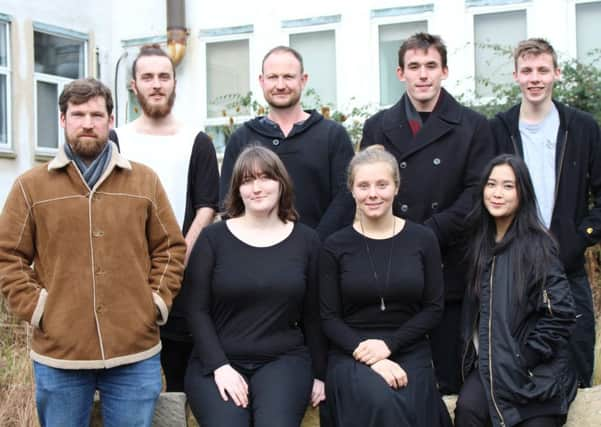Lord Darnley murder mystery inspiration for gardening competition


The mystery surrounding the 1567 murder of Lord Darnley, consort to Mary, Queen of Scots, has never been unravelled.
Now the centuries-old killing is the focus of Hortus Homicida, an exhibition created by garden design students at Scotland’s Rural College (SRUC) for the Gardening Scotland show, which takes place next month.
Advertisement
Hide AdAdvertisement
Hide AdIt began early on a February morning in 1567, when Kirk o’ Field house in Edinburgh was destroyed by an explosion.
The partially clothed body of Lord Darnley, the queen’s second husband and father of the future King James VI of Scotland, was found in a nearby orchard along with that of his servant. He had apparently been strangled.
Suspicion immediately fell on Mary and James Hepburn, Earl of Bothwell, one of her closest and most trusted noblemen.
Although Bothwell was considered to be the lead conspirator, he was tried and found not guilty.
The queen and Bothwell married just three months after the murder.
The eight students behind the Hortus Homicida project, who hail from various countries around the world, have put hours of research into the display.
They even got their hands on the evidence during a visit to the University of Edinburgh’s Anatomical Museum, where they were able to examine the victim’s skull.
Advertisement
Hide AdAdvertisement
Hide AdScottish Opera’s costume department has also provided some period outfits for the team to wear as they showcase their work and guide people through an interactive Cluedo-like game that offers a chance to solve the mystery.
The finished garden will have a Tudor theme and feature apple trees to represent the orchard where the gruesome discovery was made.
The students have also sourced five tonnes of stone to construct a mock 15th-century dry-stone wall.
New Zealander Heath Urquhart, who came up with the original idea, said: “This year is the 450th anniversary of the murder of Lord Darnley and a great opportunity to depict a moment that changed the course of Scottish history.
“The garden represents a romanticised version of a monastic garden but it also has an eerie side.
“It will be clear something has happened.”
Urquhart, who was a farmer before turning to horticulture, is looking forward to the event with a mixture of enthusiasm and trepidation.
“Gardening Scotland is a great opportunity for us as garden design students to put our ideas in front of an audience of around 30,000 people,” he said.
“It is very exciting but also a little scary.”
Advertisement
Hide AdAdvertisement
Hide AdMatt Jessop, lecturer in garden design, added: “This is a fantastic opportunity for our students to showcase their work.
“It has been great to get support from local organisations, who have shown great interest in our project.”
The students are hoping to replicate the success of last year’s SRUC team, whose Bee Garden won a gold medal at the national event.
Hortus Homicida will be constructed and finished at SRUC’s Edinburgh campus before being dismantled for reassembly and planting at the Ingliston showground, ready to go before the Gardening Scotland judges.
The event runs from 2 to 4 June.